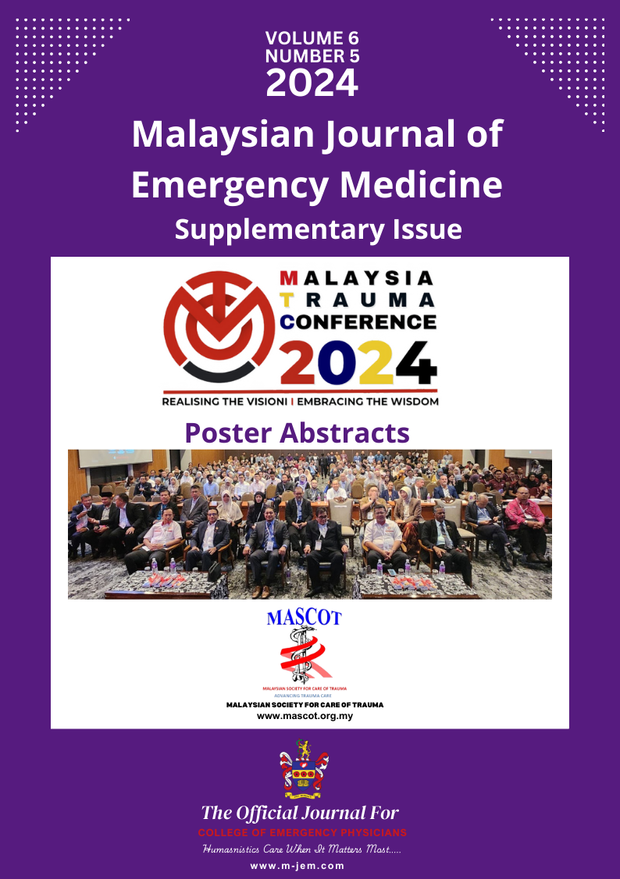A06 A Night That Makes Tomorrow’s Headlines
Main Article Content
Abstract
INTRODUCTION
The act of terrorism places a unique burden and strain on healthcare facilities and emergency medical services (EMS) in dealing with the complexity of injuries to the victims and intruders.
CASE DESCRIPTION
The nation was shocked when two police officers were killed while another was injured in the line of duty at one of the police stations in Johor during early hours of May 2024. They were attacked by an intruder which was later shot to death. The officers were assaulted by the suspect who was armed with a machete and later confiscated a gun from the police officers. The injured police officer was rushed to hospital with 2 gunshots over the chest and lower abdomen. After a few hours of observation, he developed subcutaneous emphysema and CT thorax revealed the wound trajectory without any bullet or shrapnel . He underwent wound exploration and was noted to have both entry and exit wounds with crooked trajectory between 19 to 26 cm in length. The police officer was admitted under the surgical team before being discharged a week later.
DISCUSSION
Injuries inflicted during terrorist attacks are always unpredictable and may be crude. Prompt treatment of the injury can prevent lethal consequences. Gunshot wounds (GSW) result in diffuse soft-tissue damage, muscle loss, hemorrhage, fracture, and severe pain. Terminal ballistic help us to describe the effect of projectiles on living tissue called wound ballistics and the diversity of the bullet projectile which affect the penetration and the extent of tissue damage.
CONCLUSION
It is an absolute necessity to understand management GSW in view of rising number of GSW injuries which can be complex and pose a challenge to the managing team.chosen in this case due to the severity of the optic nerve avulsion and the family’s decision.
Metrics
Article Details

This work is licensed under a Creative Commons Attribution-NonCommercial 4.0 International License.

